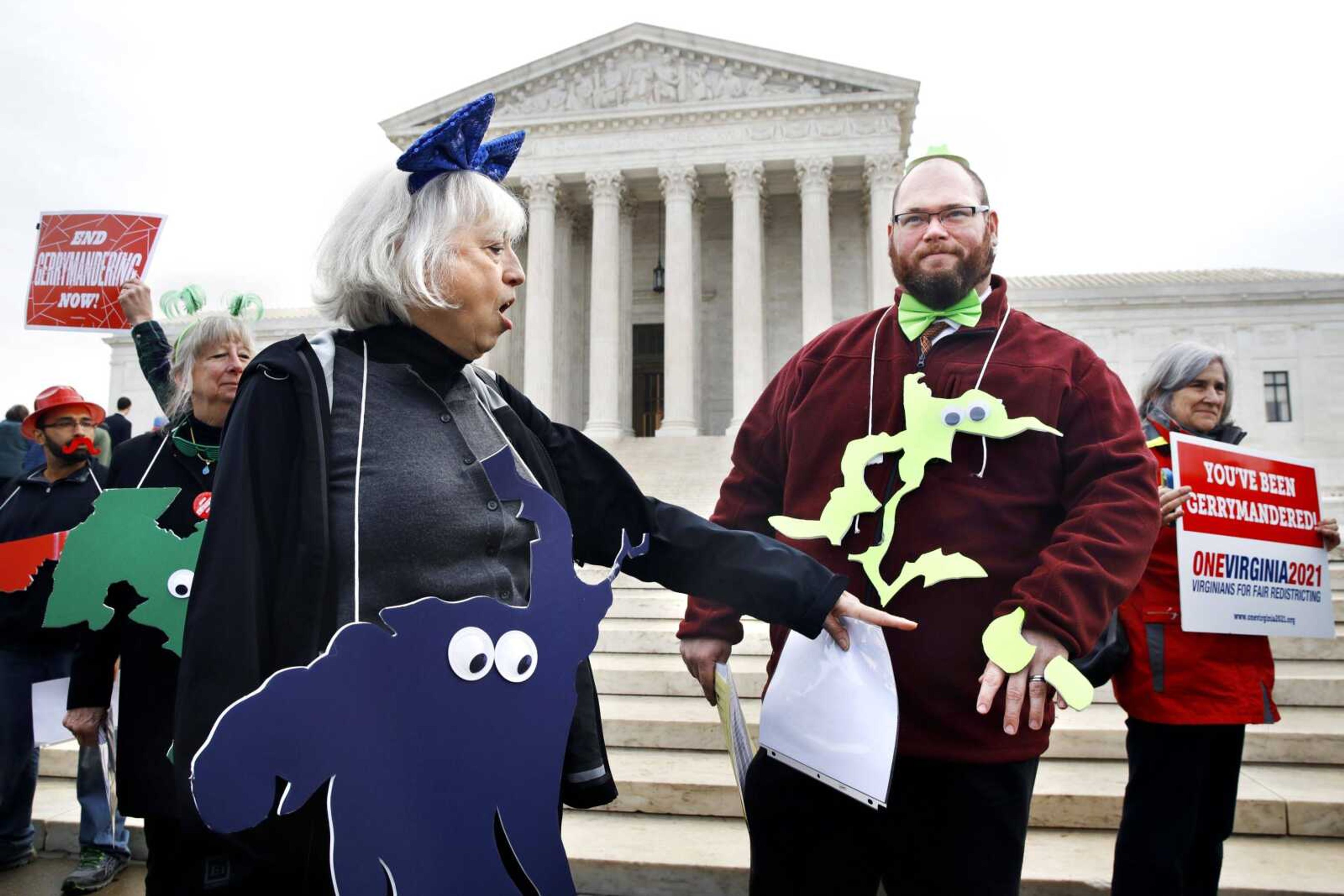Justices struggle with gerrymandering
WASHINGTON -- Dealing with an issue affecting elections across the country, Supreme Court justices wrestled Wednesday with how far states may go to craft electoral districts giving the majority party a huge political advantage. But even as they heard their second case on partisan redistricting in six months, the justices expressed uncertainty about the best way to deal with a problem several said would get worse without the court's intervention...
WASHINGTON -- Dealing with an issue affecting elections across the country, Supreme Court justices wrestled Wednesday with how far states may go to craft electoral districts giving the majority party a huge political advantage.
But even as they heard their second case on partisan redistricting in six months, the justices expressed uncertainty about the best way to deal with a problem several said would get worse without the court's intervention.
The arguments the court heard Wednesday were over an appeal by Republican voters in Maryland who object to a congressional district Democrats drew to elect a candidate of their own.
The Maryland case is a companion to one from Wisconsin in which Democrats complain about a Republican-drawn map of legislative districts. The case was argued in October and remains undecided.
Justice Stephen Breyer suggested the court could add in yet a third case involving North Carolina's congressional districts and set another round of arguments to deal with all three states.
Breyer said "we'd have right in front of us the possibilities as thought through by lawyers and others who have an interest in this subject."
His comment is an indication the justices haven't figured out the Wisconsin case in the nearly six months since it was argued.
More importantly, it suggests Justice Anthony Kennedy, whose vote almost certainly controls the outcome, has reservations about using the Wisconsin case for the court's first-ever ruling districting plans entrenching one party's control of the legislature or congressional delegation can violate the constitutional rights of the other party's voters.
The Maryland lawsuit offers the court a more limited approach to dealing with the issue because it involves just one district flipping from Republican to Democratic control after the 2011 round of redistricting.
The justices have several issues before them:
- Should courts even be involved in the political task of redistricting?
- Is there a workable way to measure how much politics is too much?
- Do the particular plans being challenged cross that line?
There was broad agreement the Republican voters who sued presented what Justice Sonia Sotomayor called "pretty damning" evidence the Democrats who controlled the state government wanted to increase the Democrats' edge in the congressional from 6-2 to 7-1.
Even Chief Justice John Roberts, who has questioned lawsuits over partisan redistricting, said the redrawing of the 6th congressional district seemed to lack "any internal logic," other than to elect a Democrat.
Residents of the wealthy Washington, D.C., suburb of Potomac, Maryland, were lumped in with people who live in the rural northwestern corner of the state, Roberts said. "They both have farms. But the former, hobby farms. And the others are real farms."
But Roberts was among several justices, including liberal justices who seemed inclined to side with the challengers, who raised a procedural problem perhaps keeping the court from deciding the merits of the case.
The Wisconsin case also has a potential problem maybe preventing a decision about partisan redistricting.
That's where Breyer's suggestion could come in. He said even a decision striking down the Maryland map, which he said seems to be an extreme gerrymander, would not necessarily apply to other cases and would leave unaddressed what he called a serious, national problem.
If the court doesn't confront the big issues now, Breyer said, sophisticated map-makers using increasingly powerful technology will create more effective partisan maps after the 2020 census.
Over the past 16 months, courts struck down political districting plans drawn by Republicans in North Carolina, Pennsylvania and Wisconsin. Federal judges threw out a state legislative map in Wisconsin and a congressional plan in North Carolina. In Pennsylvania, the state Supreme Court invalidated the state's congressional districts and replaced them with a court-drawn plan.
Connect with the Southeast Missourian Newsroom:
For corrections to this story or other insights for the editor, click here. To submit a letter to the editor, click here. To learn about the Southeast Missourian’s AI Policy, click here.








